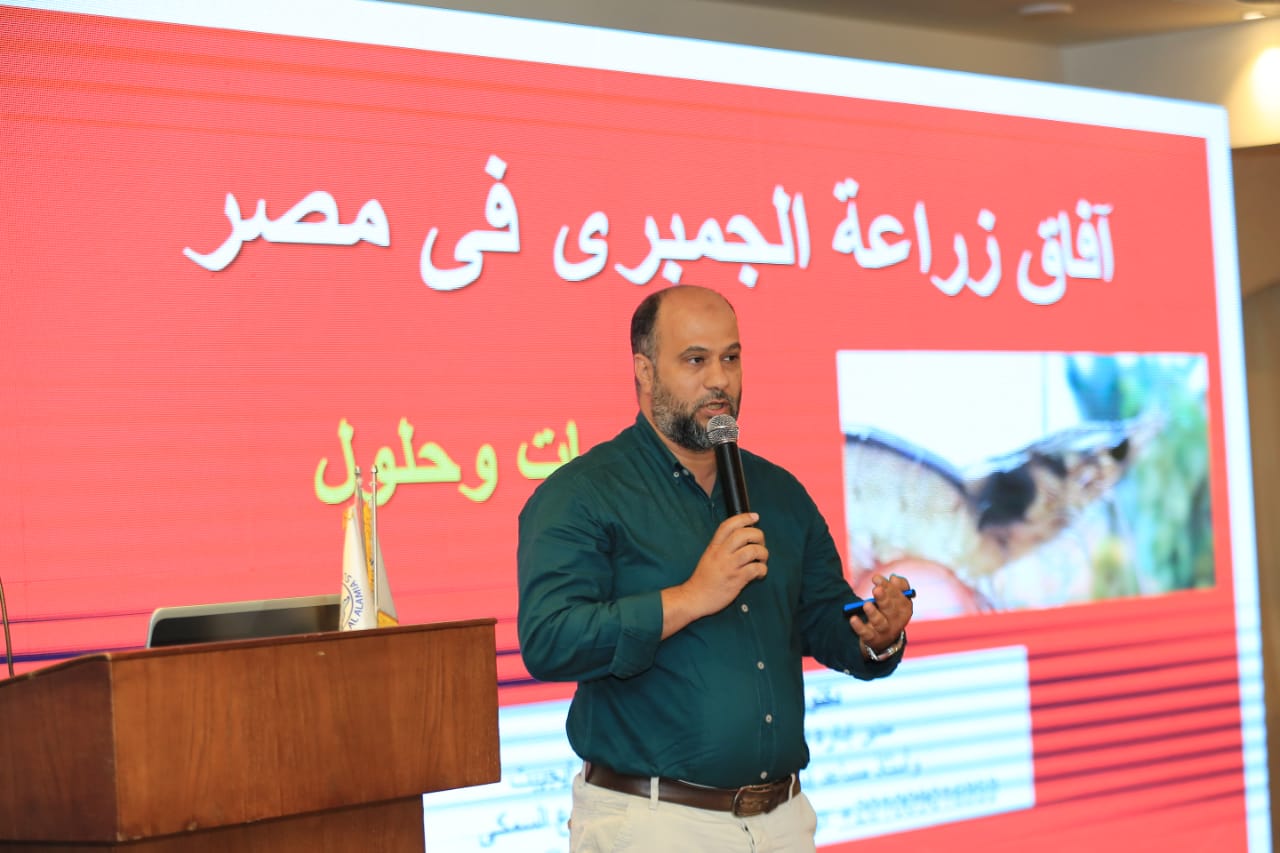Methods for shrimp farming: a challenge for Blue Economy in Egypt and Africa – The improvement of fish wealth in aquaculture is one of the most important factors for covering the shortage of animal protein, especially after steadily rising prices of red meat and the increase in obstacles that have affected animal and poultry production in recent years. Shrimp represents the most important fish product preferred by the Egyptian consumer due to its high nutritional content and taste quality.
Shrimp farming in Egypt
Statistics indicate that Egyptian production of shrimp in 2018 reached nine thousand tons, of which 155 tons were through farming, while in 2020 production increased to 10.76 thousand tons, including 2146 tons from farming, representing approximately 20% of the annual production of shrimp. Egyptian depend on imports to cover our shrimp needs, especially from Arab countries and Southeast Asia. Dr. Abd El-Rahman Khattaby is one of the most concentrated experts in shrimp farming and modernizing the mechanisms and methods of management in shrimp farms, and his passion was to catalysed to improve the quality of the farmed crustaceans and to increase production in fish farming. And through his work as a senior Researcher at Central Laboratory for Aquaculture Research, he supported many fish farmers in Egypt, Africa and Mena Region to reach the best conversion rate and the best aquaculture management practices. He also covered the position of technical support Manager at Aller Aqua Egypt and actually he cove the position as executive supervisor for Applied Research for Inland Aquaculture Development, at Al Mobdioon Center for Studies, Consultancy and Training, King Abdulaziz University – Saudia Arabia. Crustacean farming in Egypt started with Penaens semisulcatus prawns but this species was exposed to many technical and economic constraints that led to a decrease in productivity of 50 kg of prawns per acre.
The maximum productivity reached was 200 kg per acre and diseases appeared due to its weak immunity and great sensitivity to salinity variation, which led to the introduction of other indigenous penaeid shrimp varieties into breeding, and especially the species allochthonous Penaeus vannamei shrimp, which began to appear in 2018 in the Egyptian Fisheries Statistics of farmed species – the production increased annually. The Vannamei shrimp, have yielded high productivity per acre, reaching more than 1.5 tonnes per acre, and could increase with the use of modern technology.

Challenges Facing Shrimp Farming in Egypt and Potential Solutions
However, the shrimp farming industry in Egypt still faces many challenges, which may hinder the expansion of its production significantly; these main issues to solve are related to:
- Pathogens infection derivate from bacteria and viruses, and resulting from the lack of the adoption of biosafety and biosecurity standards;
- The sensitivity of shrimp to seasonal climatic changes in Egypt, which leads to the shortening of the cultivating period to summer only;
- The inadequate feeding methods and inappropriate feeds;
- The difficulty obtaining suitable fry and the lack of sufficient and widespread hatcheries;
- The lack of experience of shrimp farming personnel.
It is noted that these problems are common in many countries of the world, and have overcome them by expanding the use of hybrids suitable for the surrounding environment with the expansion of technology transfer and following the methods of success and consideration to the rest of the productive factors in farming such as:
- The use of high-quality feed regarding specifications;
- Follow veterinary and bio-security instructions to avoid disease or viral infection;
- Maintaining the quality of the aquatic environment for shrimp in ponds (water, soil, …);
- Maintaining temperatures and salinity suitable for breeding;
- Follow modern farm management systems, develop shrimp farms, and re-divide ponds to suit the required condensation intensification methods.
Committee Proposes Strategies for Promoting and Expanding Shrimp Farming Industry in Egypt
In order to promote shrimp farming in Egypt, a committee must be constituted that includes the following stakeholders:
- Lakes and Fisheries Protection Authority;
- Central Laboratory for Aquaculture Research;
- General Authority for Veterinary Services;
- National Institute of Oceanography and Fisheries;
- In addition, a group of farmers and pioneers of the shrimp farming sector.
This committee aims to discuss ways to encourage and increase the expansion of the shrimp industry through:
- Facilitating the necessary approvals for the import of high performance quality of Broodstock for hatching in the Egyptian environment;
- Selecting and suggesting the suitable sites for shrimp farming;
- Define biosecurity standards for each farm;
- Conducting awareness and training campaigns for workers in the sector;
- Monitoring shrimp farms to prevent the spread of diseases;
- Working on transferring experiences to Egyptian farmers and raising the efficiency of workers in shrimp farming;
- Developing coding for farms working in shrimp to encourage production with the aim of exporting abroad.
Methods for shrimp farming: a challenge for Blue Economy in Egypt and Africa









